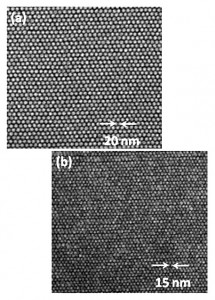
The increasing need for larger data storage space have for a long time pushed the development of ever larger and faster data storage mediums. At the moment existing hard drives max out at 3TB, but TDK’s new HAMR head innovation promises to double this limit to 6TB utilizing heat-assisted magnetic recording. HAMR was developed by Fujitsu in 2006, and relies on recording platters with a high coercivity, making it possible to pack information in more tightly than current platters. To do this they need to be heated before they’re able to write data, which TDK does using a small laser in the drive head. TDK has said that it plans to begin mass-producing drives with these increased capacities by late next year
Now how ever, TDK’s HAMR technology might already be redundant through a recent discovery by Dr Joel Yang at the Institute of Materials Research and Engineering (IMRE), collaborating with researchers at the National University of Singapore (NUS) and the Data Storage Institute (DSI). They have developed a process that can increase the data recording density of hard disks to 3.3 Terabit/in2, six times the recording density of current models. The key ingredient in the much enhanced patterning method and storage capacity, is sodium chloride, the chemical grade of regular table salt.
Dr Joel Yang’s IMRE research team uses nanopatterning to create uniform arrays of magnetic bits that can potentially store up to 3.3 Terabit/in2 of information, six times the recording density of current devices. Conventional hard disks have randomly distributed nanoscopic magnetic grains where a few tens of grains used to form one bit. This enables current hard disk models to hold up to 0.5 Terabit/in2 of information. The IMRE-led team uses a bit-patterned media approach, where magnetic islands are patterned in a regular fashion, with each single island able to store one bit of information.
“What we have shown is that bits can be patterned more densely together by reducing the number of processing steps”, said Dr Joel Yang, who heads the project. The current technology in use today have very tiny ‘grains’ of about 7-8 nm in size deposited on the surface of the storage media. The information or a single bit, is stored in a cluster of these ‘grains’ however, and not in any single ‘grain’. IMRE’s bits are about 10nm in size but store information in a single structure.
The secret of the research lies in the use of an extremely high-resolution e-beam lithography process that produces super fine nano-sized structures. Adding sodium chloride to a developer solution used in existing lithography processes, Dr Yang was able to produce highly defined nanostructures down to 4.5 nm half pitch, without the need for expensive equipment upgrades. This ‘salty developer solution’ method was invented by Dr Yang when he was a graduate student at the Massachusetts Institute of Technology.
The work now presented is the result of a collaborative effort with Prof Vivian Ng’s group at NUS, and Dr Yunjie Chen, Dr Siang Huei Leong, and Mr Tianli Huang from A*STAR DSI’s 10 Terabit/in2 Magnetic Recording programme.
More information about this research and the discoveries:
